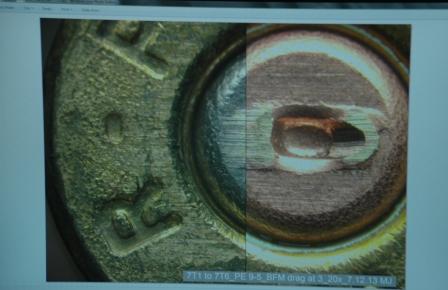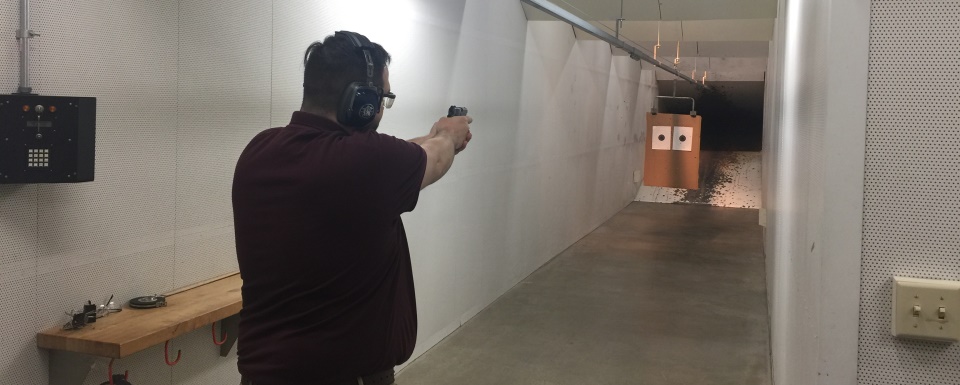Firearms & Toolmarks

The Firearms and Toolmarks Section examines firearms for operability and compares bullets, cartridge cases, and shotshell cases to determine if they were fired from the same firearm, multiple firearms or specific firearm, if submitted.
Each firearm submitted to the section is examined to determine whether it is in normal mechanical operating condition and it is test fired, when possible. The examination includes the operability of the safety features, physical characteristics of the firearm, determination of manufacturer, model and serial number. A microscopic comparison of ammunition components is done in an attempt to associate a particular firearm as having fired the components.
NIBIN
The section utilizes the National Integrated Ballistic Information Network (NIBIN) administered by the Bureau of Alcohol, Tobacco, Firearms and Explosives (ATF) to acquire digital images of the markings on cartridge cases and shotshell cases recovered from a crime scene or test fires obtained from submitted semiautomatic pistols, semiautomatic, slide-action and bolt-action rifles and shotguns. The examiner compares images against previous NIBIN entries in an attempt to link different crimes together.
Distance Determination
Determining the approximate distance the muzzle of a firearm was from an object at the time of firing may be determined by examining clothing or other materials for the presence of burnt, partially burnt and un-burnt gunpowder particle, vaporous lead and particulate metals.
Toolmarks
Toolmark examinations are conducted to determine if a toolmark was produced by the same tool or a specific tool, if submitted. Toolmarks may be encountered on a variety of surfaces including wood and metal.
Serial Number Restoration
Serial numbers provide a means of identifying and tracing items of equipment, vehicles, firearms and other products using this form of identification. The numbers or letters are generally stamped into a metal surface. Serial numbers can be obliterated using several different techniques, such as scraping, grinding, punching or filing. Usually the damage is limited to the surface with the intention to make the number unreadable. Procedures performed in the laboratory can restore the number to a readable state.

